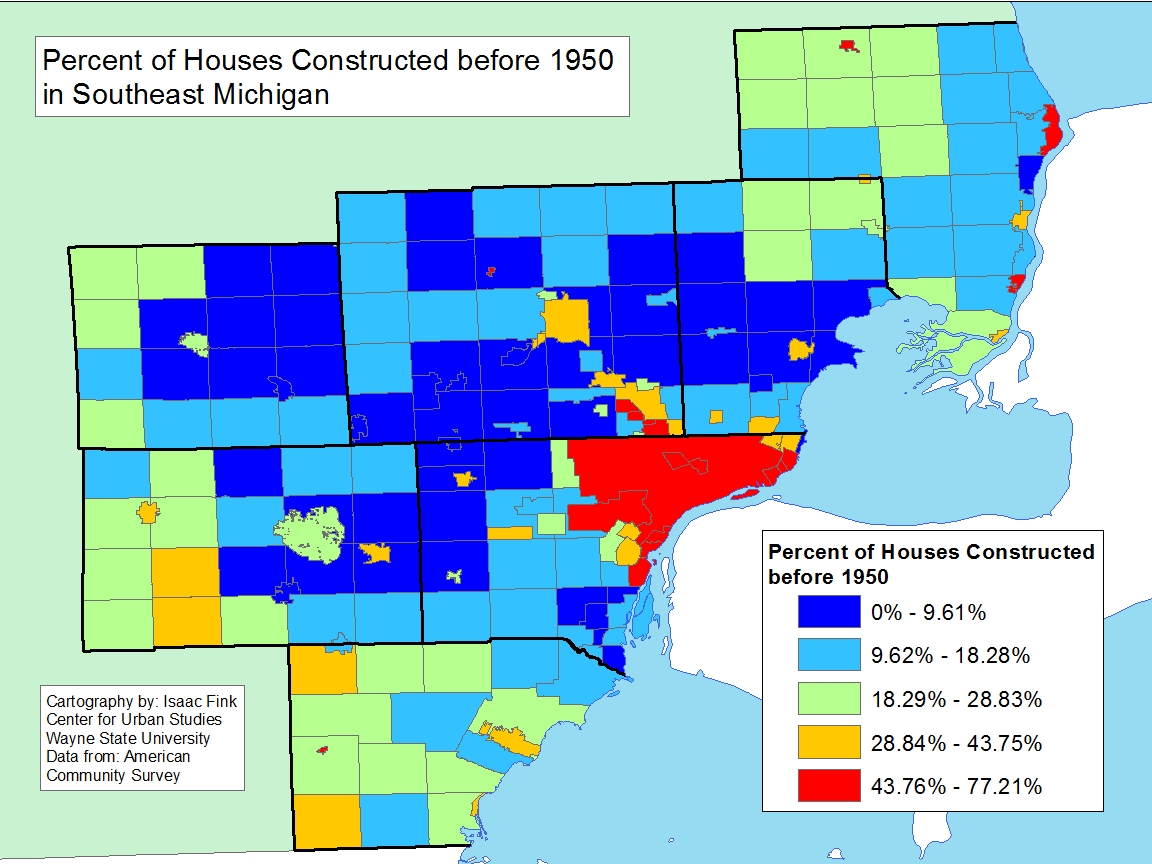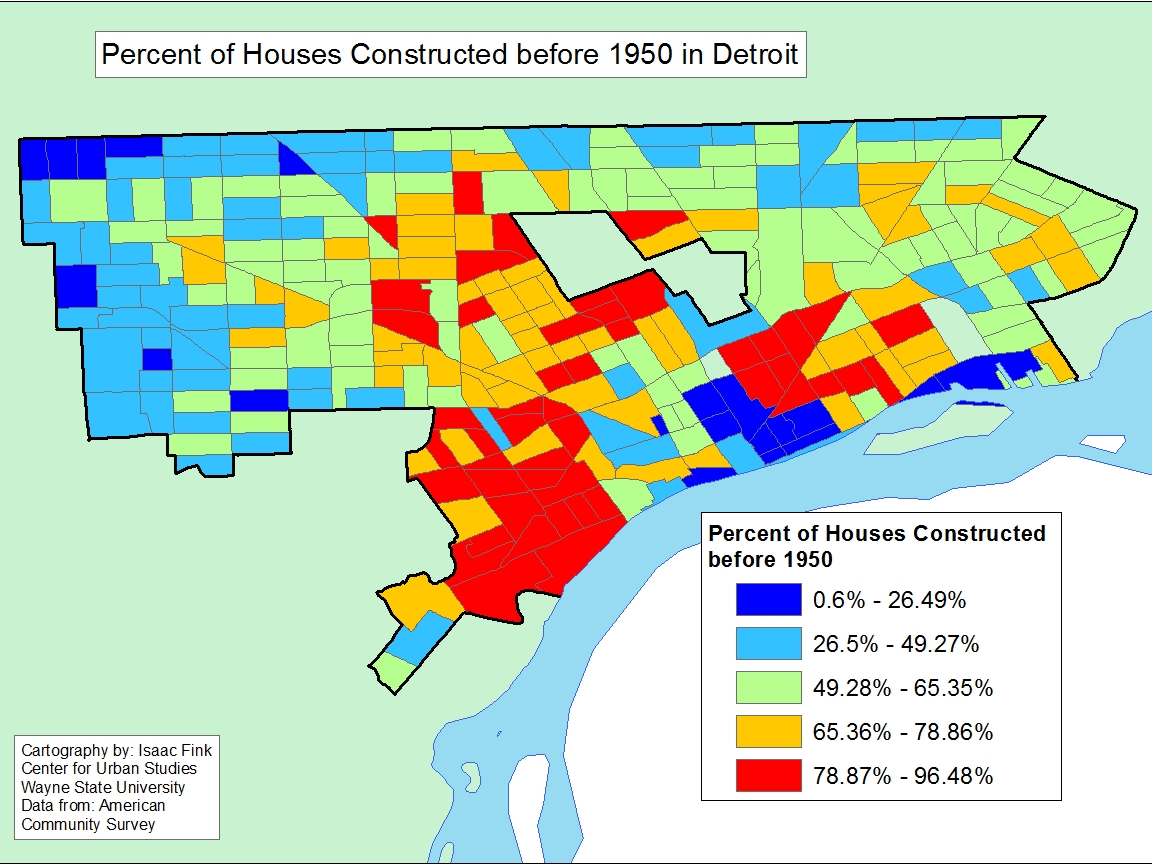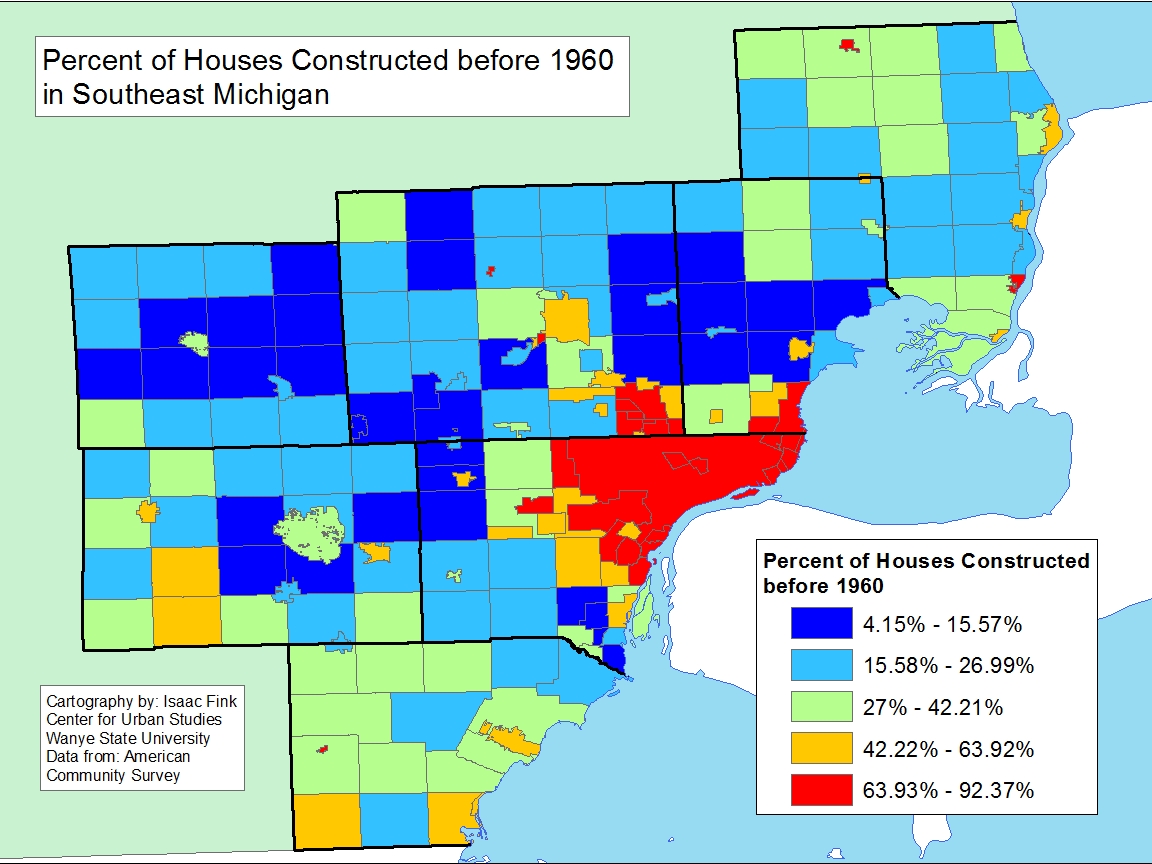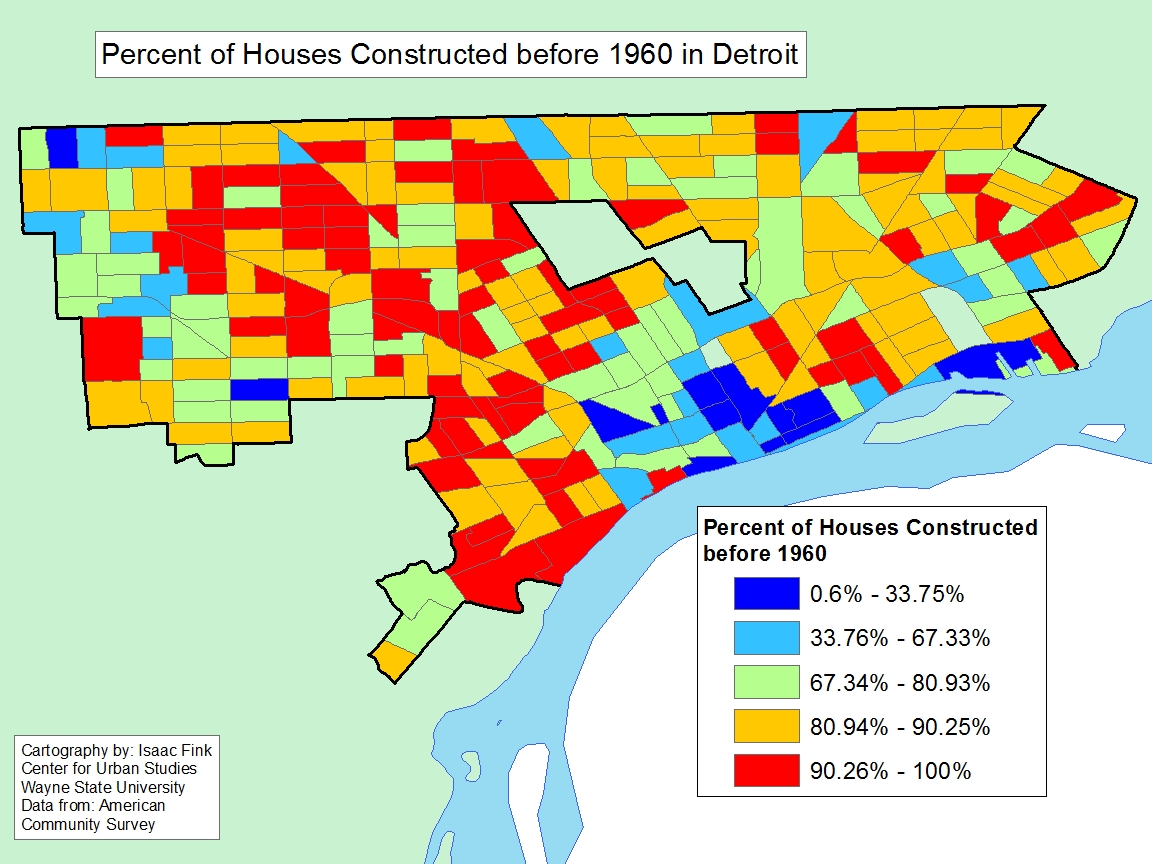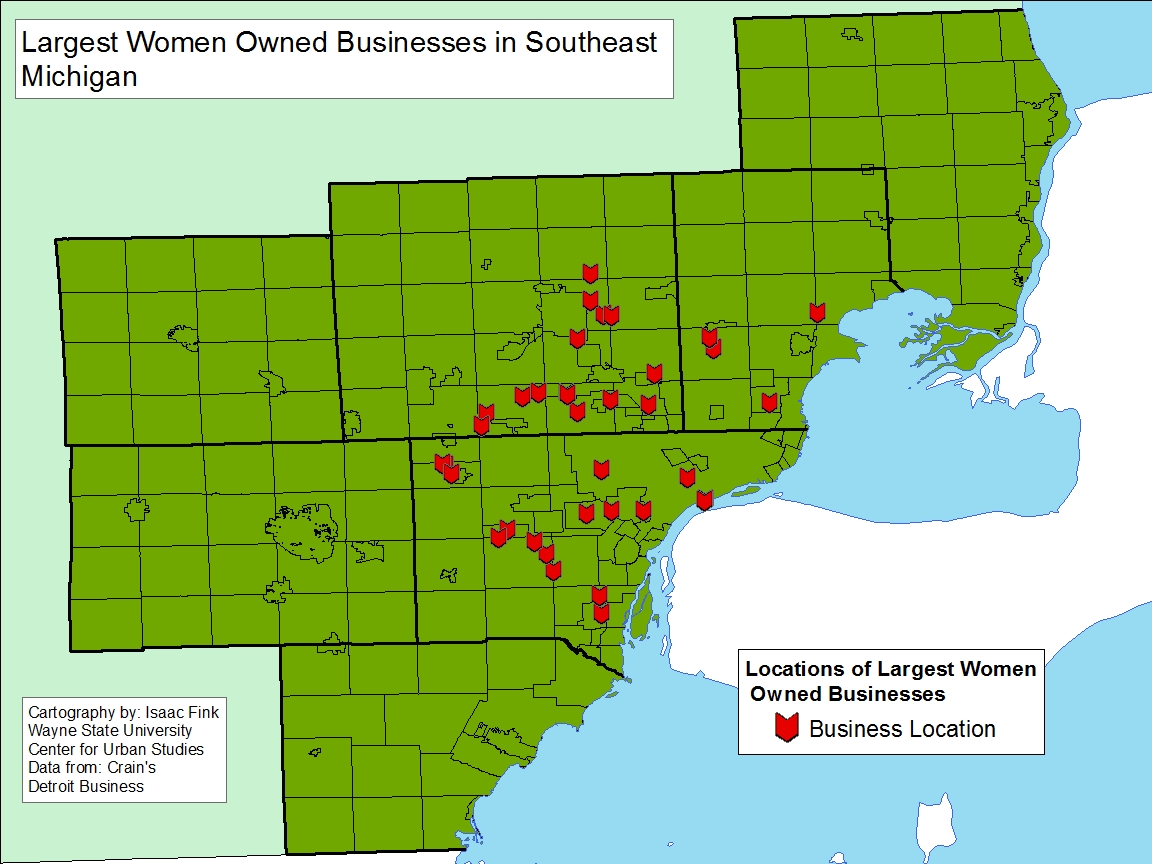The majority of Southeastern Michigan’s oldest homes are located in Wayne County, with six of the communities in the county having more of than 50 percent of the housing stock built prior to 1950. These communities are: Detroit, Highland Park, Hamtramck, Grosse Pointe Farms, Grosse Pointe Park and Wyandotte. Of those communities, and regionally, Grosse Point Park had the highest percentage of homes built before 1950 at 77 percent, followed by Hamtramck at 70.4 percent. In Detroit, about 58 percent of the city’s housing stock was built before 1950. Majority of the homes in Detroit built before 1950 are located in Southwest Detroit, with pockets near the Highland Park and Hamtramck borders, or the central area of the city. Conversely, the area long Belle Isle/the West Village and the most northwest corner of Detroit have the lowest percentage of homes built prior to 1950.
Regionally, about 22 percent of Southeastern Michigan’s housing stock was built prior to 1950. Looking a decade ahead, Census data shows that about 41 percent of the region’s housing stock was built before 1960. In examining this map below, we see that the communities with the highest percentage of homes built before 1960 mainly grew around the city of Detroit into the southern borders of Macomb and Oakland counties, and just east of Detroit. Southern Macomb County experienced some of the largest growth between 1950 and 1959, according to the Census Data. During that time frame Eastpointe grew its housing stock by 48 percent, bringing the total percentage of homes built prior to 1960 to about 78 percent. The City of St. Clair Shores grew its housing stock by 51 percent between 1950 and 1959; the total percentage of this city’s housing stock built prior to 1960 is 66 percent. In Oakland County, the City of Oak Park grew its housing stock by 51.2 percent between 1950 and 1959, growing the percentage of its housing stock built prior to 1960 to 67 percent.
While the inner-ring Detroit suburbs began to grow during this time, the peak percentage of homes being built after 1950 was for cities like Detroit, Hamtramck and Grosse Pointe Farms. For the city of Hamtramck, majority of its housing stock was built before 1939; the same is true for the city of Grosse Pointe Farms.
In Detroit, 22.9 percent of its housing stock was built between 1950 and 1959, making about 80 percent of its housing stock being built before 1960. The decade in which plurality of Detroit’s housing stock was built was between 1940 and 1949; about 24 percent of the housing stock was built during the 1940s.
As noted, the percentage of homes built outside the city of Detroit truly began to ramp up after 1950; the Detroit map below shows a similar trend was also occurring in the city. In the 1950 Detroit map above the Census data shows that majority of the housing built in Detroit prior to 1950 was located in the southwest portion area of the city and the more central area. The 1960 map shows that the percentage of housing built in Detroit between 1950 and 1959 largely grew in the northern and northwestern parts of the City.
This post highlights that Detroit and its inner-ring suburbs have a large stock of aging homes that will require investments and stronger laws to remain safe and habitable. One recent example of this is how the Detroit City Council approved updating its property maintenance code. This code amendment now requires landlords to remove lead hazards from homes that they rent. Such actions are particularly important because, because homes built prior 1978 are particularly susceptible to hazards related to lead-based paint given that a ban didn’t exist until then.
